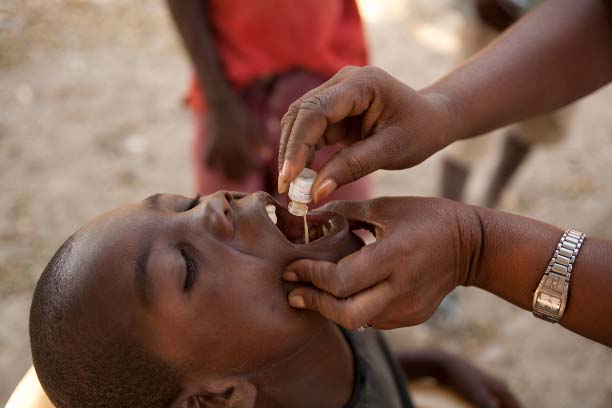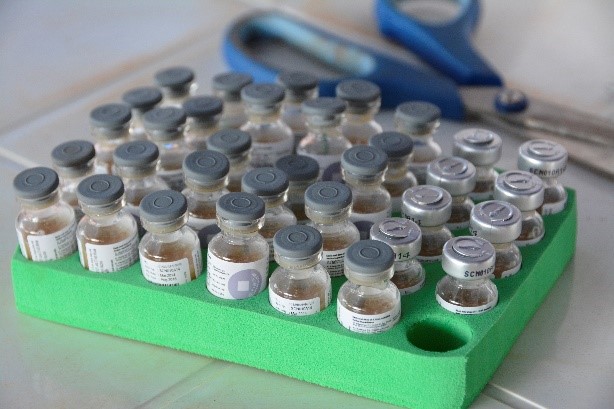
A New Toolkit to Help Stop Cholera

Cholera is an acute diarrheal disease that can lead to rapid dehydration and death if not immediately and correctly treated. While the global burden of cholera is not precisely known, estimates show that there are more than 2 million cases per year leading to about 95,000 deaths annually. Cholera occurs mainly in areas with poor water and sanitation conditions and is transmitted through the ingestion of contaminated food or water. Therefore, efforts to prevent cholera often involve improving water, sanitation and hygiene (WASH) conditions and the promotion of healthy behaviors. Oral cholera vaccine (OCV), while perhaps less known, is also an essential component for cholera prevention. OCV can decrease the severity of an outbreak, reduce rates of disease in endemic settings, and prevent cholera from occurring in times of humanitarian crisis or emergencies.
OCV has been used sporadically since 1997, but it was not until it was prequalified by the WHO in 2011 that its use has become more widespread. To date, over 30 million doses of vaccine have been administered in various countries and settings. The cholera vaccine most used currently is Shanchol, since it is available through the global stockpile. Shanchol can be administered to anyone over the age of one year, generally given in two doses, the second occurring two to four weeks after the first. Trials have shown an efficacy of 65% over a period of five years. For this reason, it is important to provide information to vaccine recipients about healthy behaviors such as drinking safe water, practicing good food hygiene, washing hands at key moments, using latrines, and maintaining clean latrines. The vaccine has also been shown to provide indirect (herd) protection to communities, lowering the risk of contracting cholera even among those who have not been vaccinated. OCV is not an alternative to safe water, but should be used in conjunction with improving water and sanitation.
become more widespread. To date, over 30 million doses of vaccine have been administered in various countries and settings. The cholera vaccine most used currently is Shanchol, since it is available through the global stockpile. Shanchol can be administered to anyone over the age of one year, generally given in two doses, the second occurring two to four weeks after the first. Trials have shown an efficacy of 65% over a period of five years. For this reason, it is important to provide information to vaccine recipients about healthy behaviors such as drinking safe water, practicing good food hygiene, washing hands at key moments, using latrines, and maintaining clean latrines. The vaccine has also been shown to provide indirect (herd) protection to communities, lowering the risk of contracting cholera even among those who have not been vaccinated. OCV is not an alternative to safe water, but should be used in conjunction with improving water and sanitation.
Recognizing both the benefits of the vaccine and its underutilization, in 2013, the World Health Organization (WHO) established a stockpile of OCV with an annual two million doses. Initially, the stockpile was intended for use during outbreaks and humanitarian crisis settings and was accessible through an application submitted via the OCV international coordinating group. In January 2016, with the addition of another vaccine manufacturer, the WHO announced that the available supply will increase significantly and that the vaccine may also be used for high- risk areas as a preventive measure. With increased availability of OCV and potential higher demand, it’s essential that policy makers understand when and where the vaccine should be used and that health workers have the information to effectively implement vaccination campaigns and administer the vaccine.
In an effort to provide the necessary information for those implementing vaccine campaigns, administering the vaccine, or making decisions regarding its use, we have created the Stop Cholera Toolkit. The Toolkit is a series of four modules that help decide if, when, where, and how to use OCV to reduce mortality, prevent cases, and halt outbreaks. The Manual for OCV Campaigns: For adaptation by program managers for training health care workers provides a comprehensive overview on cholera, the vaccine, and the steps involved in conducting a vaccination campaign, including important key WASH messages to prevent cholera.
I am personally looking forward to hearing how the additional vaccine supply is used. I invite you to share your experiences implementing OCV campaigns with us at: Info@stopchol.org.
Photo credits:
Jon Lascher, Partners In Health, 2012.Louise Annaud, Médecins Sans Frontières, 2015


